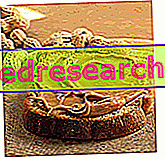By Dr. Eugenio Ciuccetti
Manual lymphatic drainage - or more simply lymphatic drainage - represents, especially among women, one of the most popular massage techniques in the world today.
Conceived in 1932 by the Danish physician and biologist, Emile Vodder (pronounced Fodder), lymphatic drainage performs various beneficial functions: first of all that of helping to counteract and prevent the formation of edema and swelling in any part of the body.

The situation is different for idiopathic and non pathological edemas. The former are those for which the cause is not known with certainty. Sometimes caused by heat, stress, fatigue. The latter are typical ones, for example, from the menstrual cycle, cellulite, pill (estrogen) or pregnancy.
In the latter case it is necessary to avoid massages during the first and most delicate three-month gestation period. After the third month, however, lymphatic drainage becomes the most indicated massage.
Effective in fact in stimulating the lymphatic circulation and therefore in counteracting the accumulation of liquids, this technique is by nature slow, delicate and superficial, unlike other deeper massages that could, for example, cause an excessive dilation of the capillaries already fragile woman.
It should be noted that it is not uncommon for pregnant women to deal with edemas spread throughout the body; and that to treat them correctly all together would take about 5 hours. Too long a time for both the woman and the operator.
That's why, generally, we prefer to work one part at a time for about an hour. Maybe separating the lower limbs from the upper ones. It is no coincidence that lymphatic drainage is commonly called a "sectoral massage".
After a month of sessions (a couple a week) we will have effectively worked the whole body.
Essential, before each treatment, is the execution of the so-called "neck unloading maneuvers". A series of pumpings (this is how the typical lymphatic drainage maneuvers are defined) necessary to free the so-called Terminus: a point of fundamental importance located at the level of the supraclavicular dimple. Here, in fact, there is an important lymph node station; the point of arrival of all the lymphatic circulation.
Performing the discharge, freeing the Terminus, means preventing a possible overload at this level and the consequent risk of swelling on the sides of the neck, difficulty swallowing and a feeling of suffocation. The unloading maneuvers last about 20 minutes.
It is also important to remember that - if the abdomen of a pregnant woman is treated - the most profound maneuvers must be avoided, such as those used otherwise to favor intestinal peritalsis (for example in the case of constipation). The same precaution should be observed in case of menstrual cycle (especially if abundant and painful), of ovarian cysts and for at least 6 months after a cesarean section.
The possible presence of tuberculosis, acute infections (with enlarged and painful lymph nodes) and that of malignant tumors, represents an absolute contraindication to the use of lymph drainage, in any subject.



